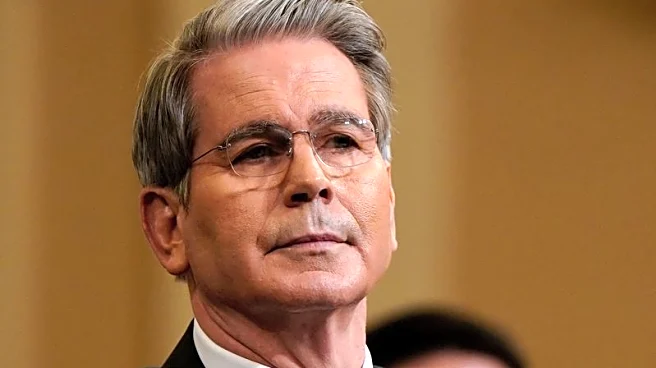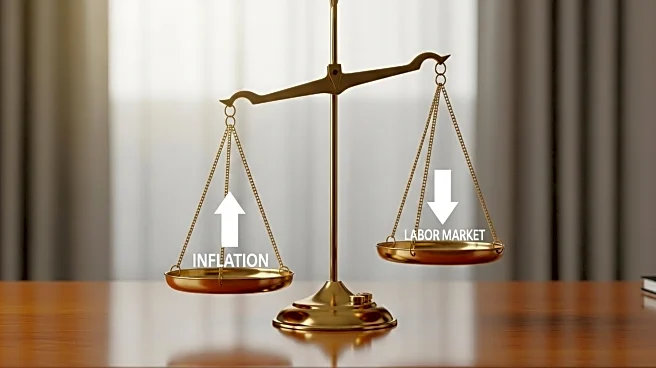What is the story about?
What's Happening?
The U.S. Federal Reserve is facing a challenging policy decision in 2025 due to weakening labor market conditions and persistent inflation. The August jobs report revealed a significant slowdown, with only 22,000 new jobs added, far below expectations, and the unemployment rate rising to 4.3%. Wage growth has also decelerated to 3.7% year-over-year, the weakest in over a year. Meanwhile, core inflation remains high at 3.1% year-over-year, driven by services inflation and tariff-related price increases. These economic indicators have led to increased market speculation about a potential rate cut by the Federal Reserve in September, with a 67% probability of such a move.
Why It's Important?
The potential rate cut by the Federal Reserve is significant as it could impact various sectors of the U.S. economy. A reduction in interest rates may provide relief to the labor market by encouraging borrowing and investment, potentially leading to job creation. However, it also risks prolonging inflationary pressures, which could affect consumer purchasing power and business costs. The decision will be closely watched by investors, as it may influence asset allocation strategies, with shifts towards bonds and alternative investments expected. Additionally, sectors like healthcare and utilities may gain traction due to their defensive nature amid economic uncertainty.
What's Next?
If the Federal Reserve proceeds with a rate cut in September, it would mark a shift from its previous tightening cycle. This decision could lead to changes in investment strategies, with increased focus on inflation-protected assets and longer-duration bonds. The appointment of Stephen Miran to the Fed's governing board may also influence policy towards accommodation, given his advocacy for economic resilience. Investors will need to adapt to a lower-rate environment, monitoring sector-specific risks tied to wage and price trends.
AI Generated Content
Do you find this article useful?














